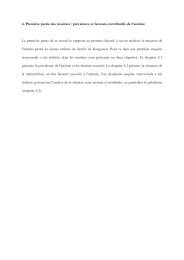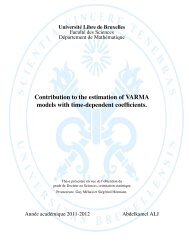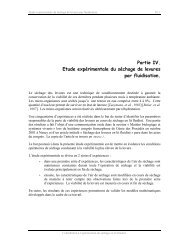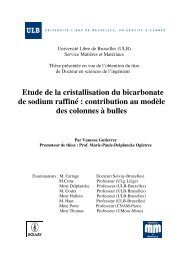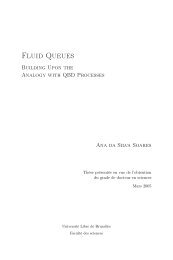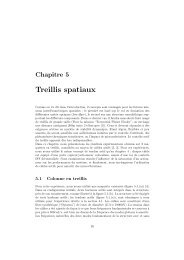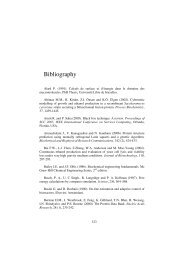Diapositive 1 - de l'Université libre de Bruxelles
Diapositive 1 - de l'Université libre de Bruxelles
Diapositive 1 - de l'Université libre de Bruxelles
Create successful ePaper yourself
Turn your PDF publications into a flip-book with our unique Google optimized e-Paper software.
Chapitre IIINTRODUCTIONEchino<strong>de</strong>rms are wi<strong>de</strong>ly distributed benthic invertebrates playing an important role innumerous ecosystems. They are characterized by a well-<strong>de</strong>veloped endoskeleton ma<strong>de</strong> ofmonocristaline elements, the so-called ossicules, joined together by connective andmuscular fibers (for a review see Dubois and Chen 1989). The mineral phase of theskeleton is ma<strong>de</strong> of high-magnesium calcite in which strontium is the main trace element.It forms through a transient amorphous calcium carbonate phase (Politi et al 2004). Themineral phase contains ca 0.1 wt % of occlu<strong>de</strong>d organic material. This organic matrixplays a crucial role in the formation of the skeleton, controlling nucleation and crystalgrowth (Berman et al 1988).The Mg/Ca ratio in the echino<strong>de</strong>rm skeleton varies with the seawater Mg/Ca (Ries 2004)and has been used as a proxy of Phanerozoic oceanic changes (Dickson 2002) which arein turn important to evaluate secular changes in both continental silicate weatherings andoceanic seafloor alterations. It is also related to temperature and salinity (Clarke andWheeler 1922, Chave 1954, Pilkey and Hower 1960, Weber 1969, 1973, Richter 1984,Richter & Bruckschen 1998, Borremans et al 2009). The origin of the temperature effectis unclear. Weber (1969, 1973) suggested that it is mainly driven by phylogenetic factorsand growth rate. However, as most relations between the skeletal Mg/Ca ratio andtemperature of skeleton precipitation were established using field specimens mixingdifferent species (Chave 1954, Weber 1969, 1973, Dickson 2002), it is impossible todiscern temperature from physiological and genetic effects. Furthermore, salinity was nottaken into account when establishing these relations. In this respect, it is noteworthy thatthe few studies focusing on single species (but using field specimens) reported differenttrends for species and higher taxa (Richter 1984, Richter & Bruckschen 1998).In numerous taxa with a calcite skeleton, the Sr/Ca ratio is linked to growth rate (Lorrainet al 2005, Rickaby et al 2002, Stoll & Shrag 2000) but this factor is almostuninvestigated in echino<strong>de</strong>rms. Pilkey & Hower (1960) reported that the Sr/Ca ratio in thesand dollar Dendraster excentricus is inversely related to temperature, a relation usuallyencountered in aragonitic skeletons (Shen et al 1996) and positively linked to salinity.A better un<strong>de</strong>rstanding of the factors controlling the incorporation of minor and traceelements in the echino<strong>de</strong>rm skeleton is not only important to improve the value of theskeletal Mg/Ca ratio as proxy of the seawater Mg/Ca ratio but also to infer the potential48



